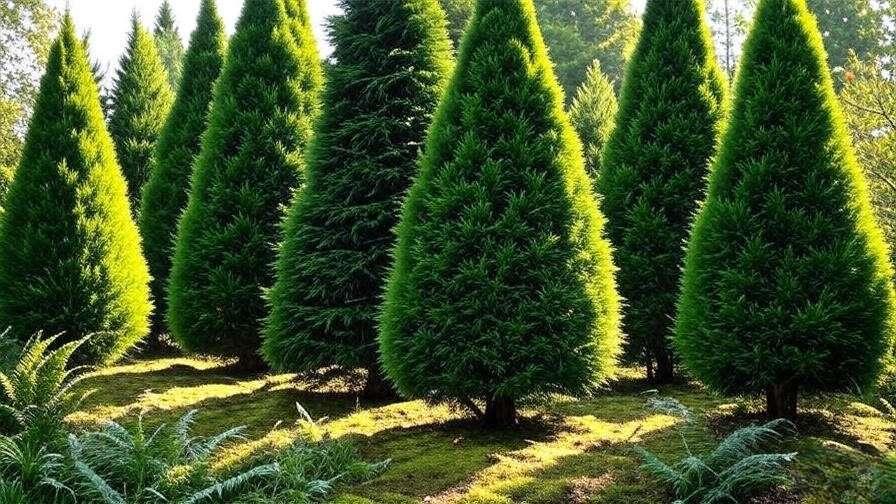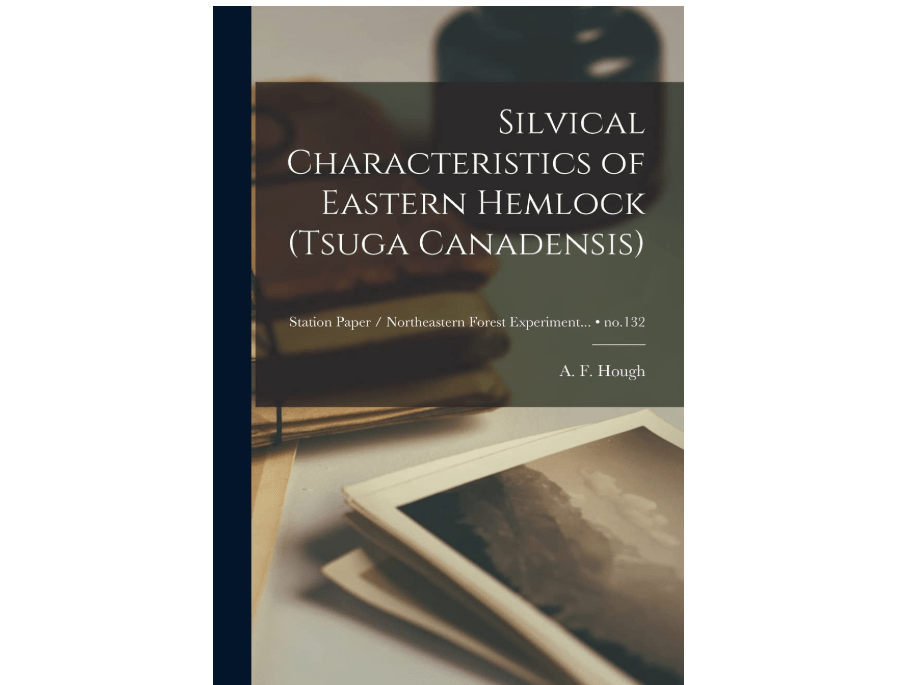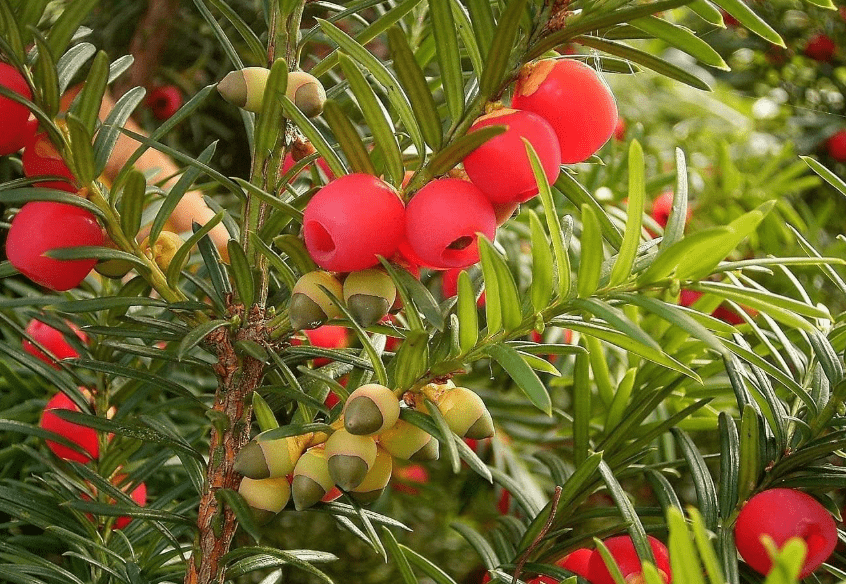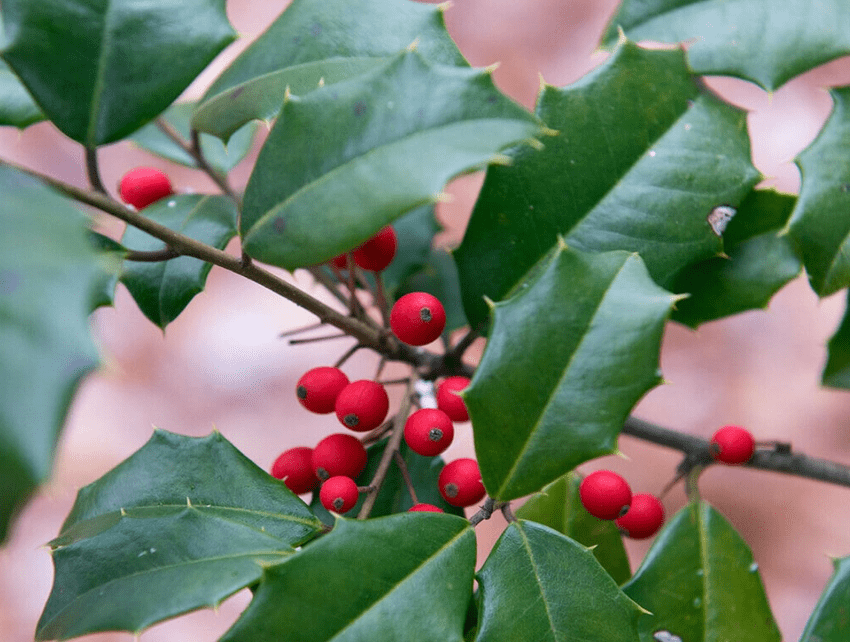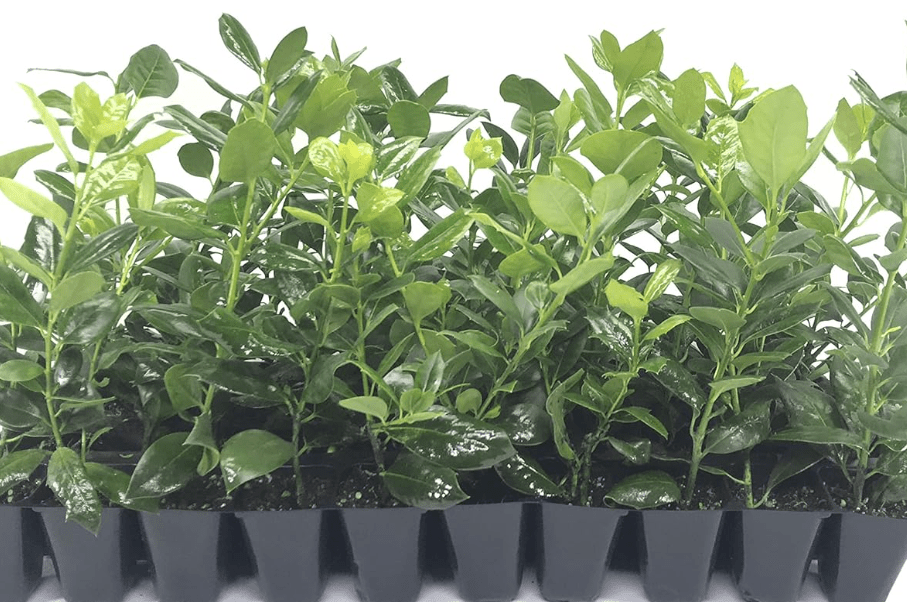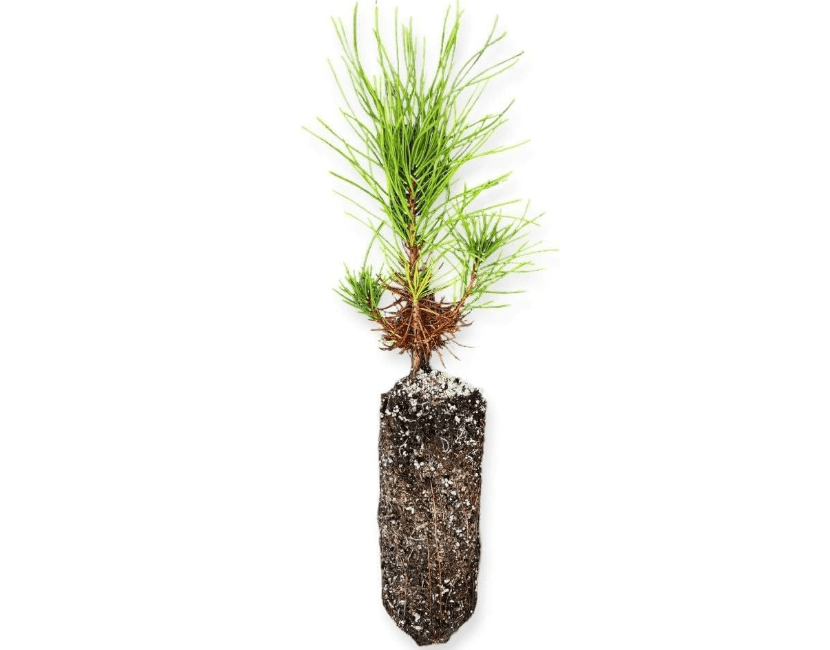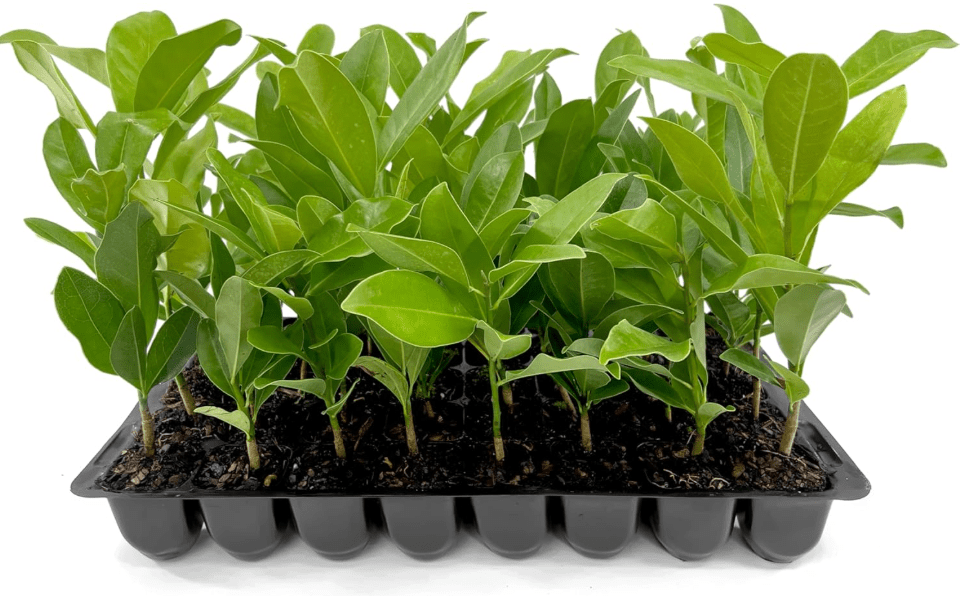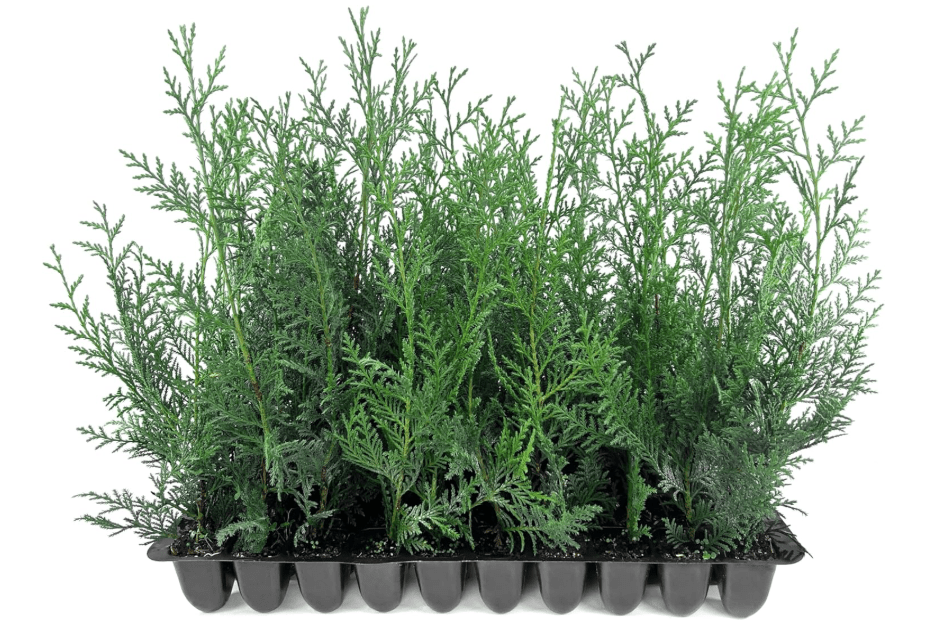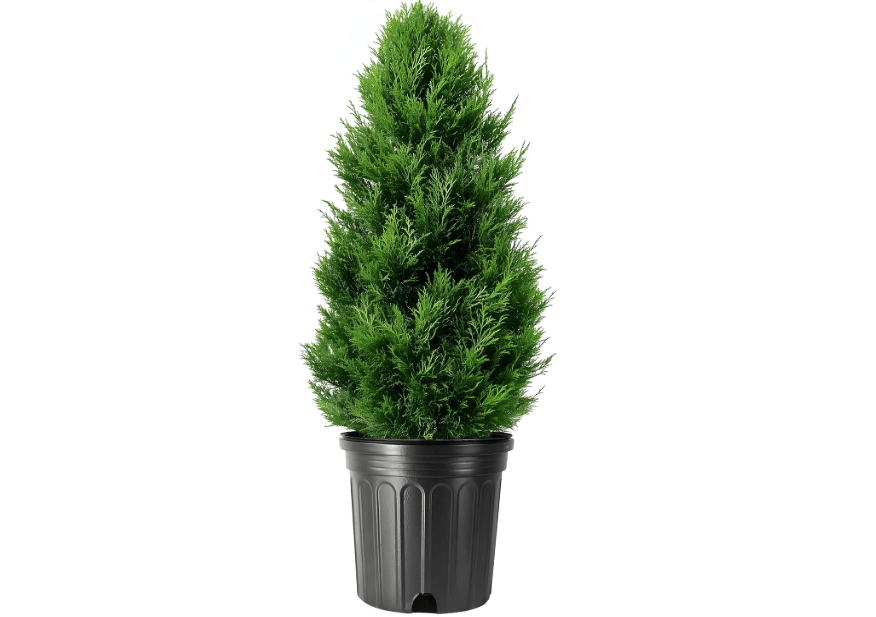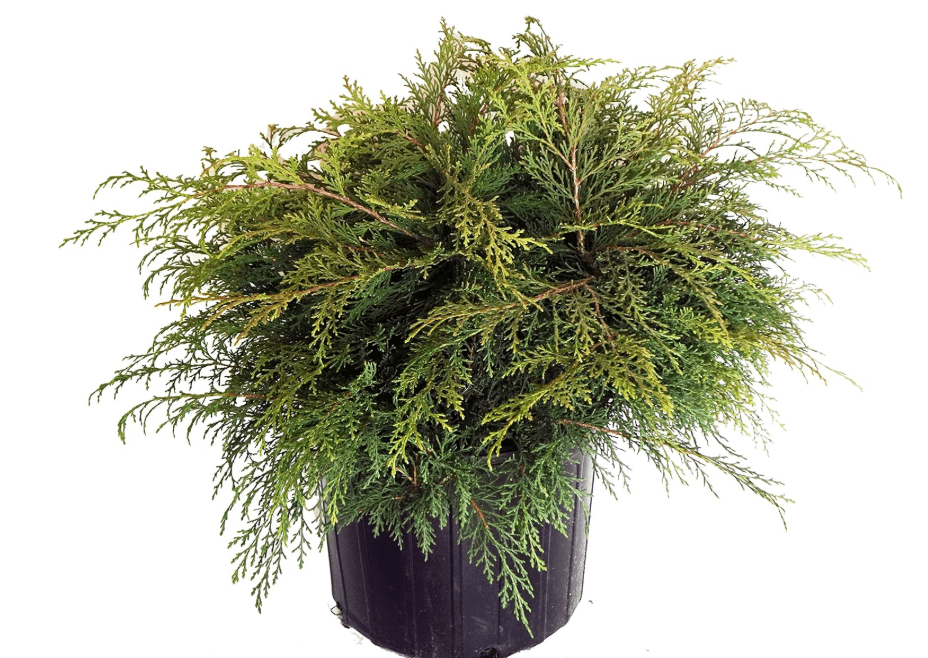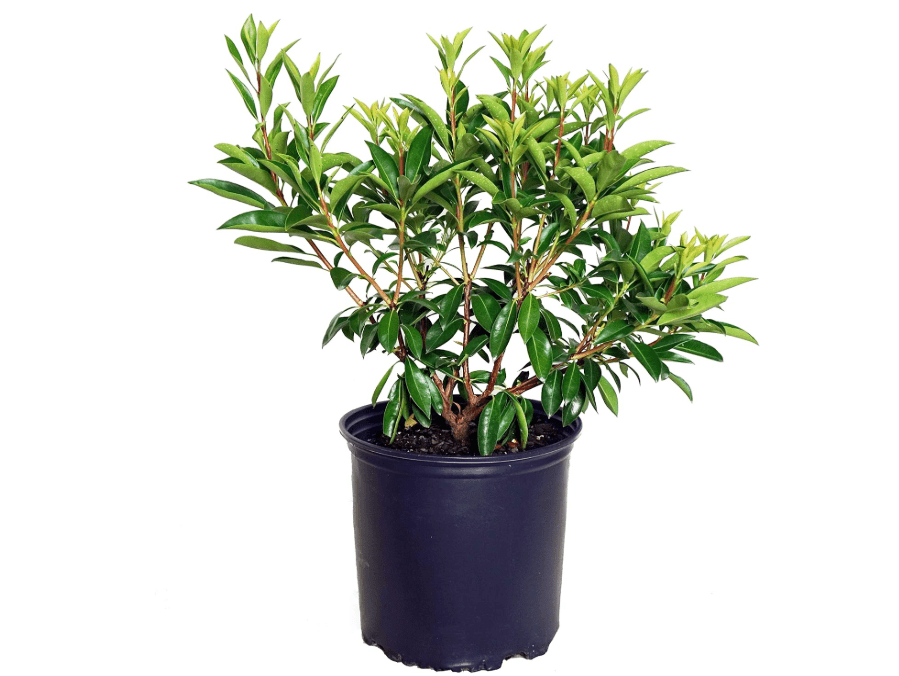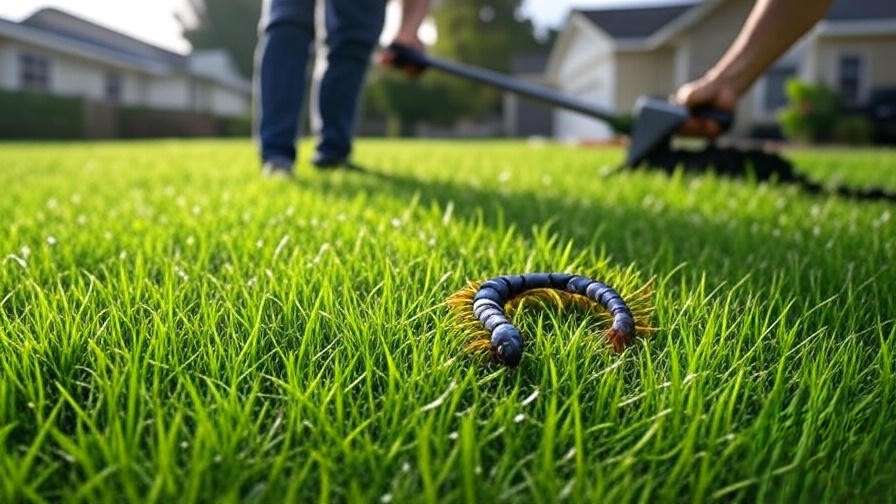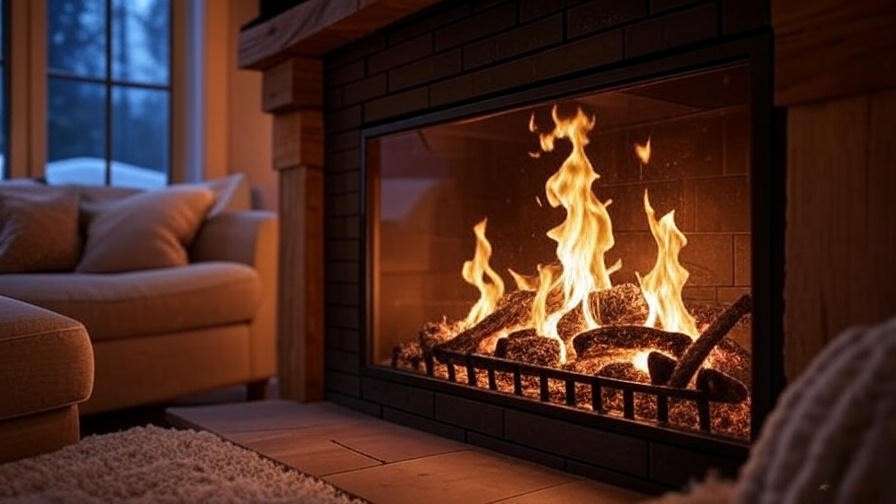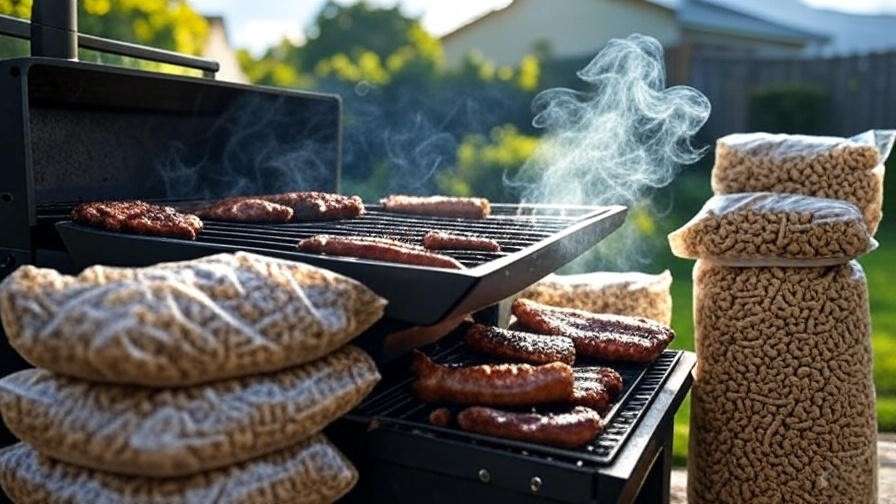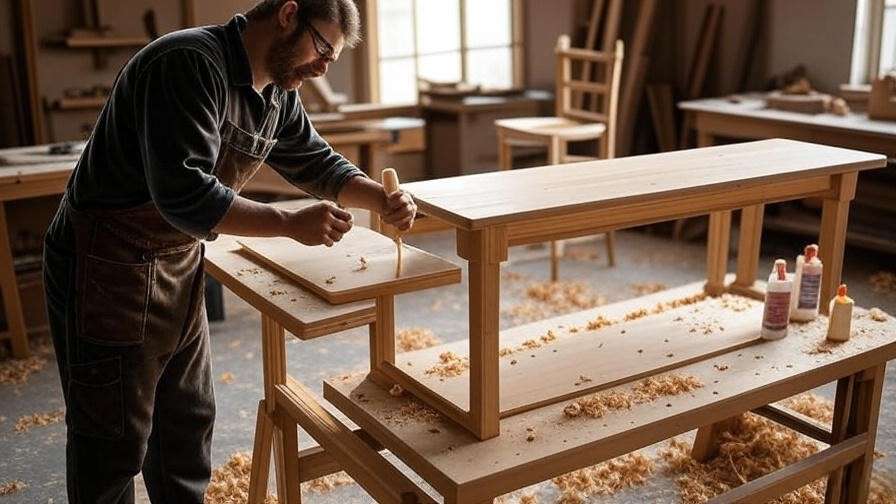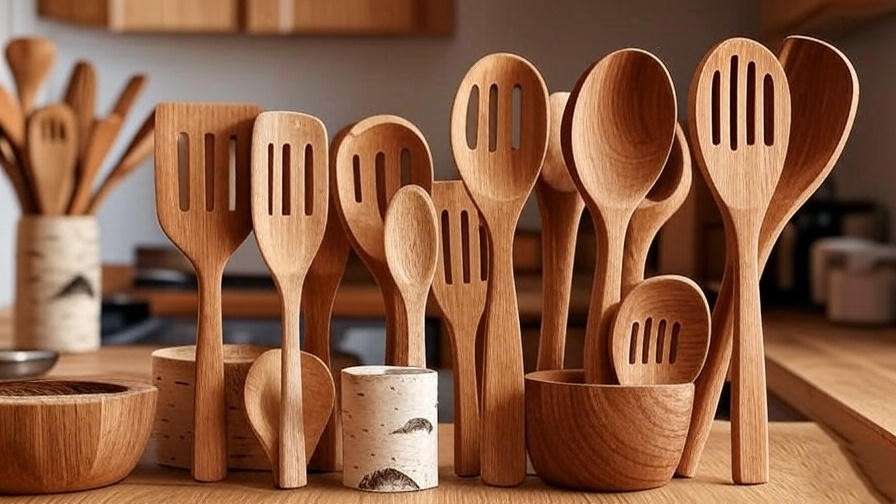Imagine transforming your sun-baked backyard into a cool, secluded oasis where you can unwind without the summer glare—year-round. With scorching heat waves on the rise and energy bills climbing, finding the best 10 evergreen trees for shade is a game-changer for homeowners. Many yards suffer from limited sunlight due to existing structures, neighboring trees, or north-facing lots, leaving bare spots that offer no relief from heat or prying eyes. Traditional shade trees often drop leaves, exposing you in winter, while sun-loving evergreens flop in low-light conditions. This comprehensive guide curates the best 10 evergreen trees for shade, backed by current Amazon sales data, customer ratings (4.5+ stars from thousands of reviews), and expert insights from sources like Epic Gardening and the Arbor Day Foundation. We’ll dive into detailed comparisons, pros/cons, and real-user feedback to help you select the perfect tree for your climate, space, and goals—empowering confident purchases that boost curb appeal and save on AC costs.
Why Choose Evergreen Trees for Shade?
Evergreen trees are the ultimate multitaskers for shaded landscapes, delivering persistent foliage that ensures year-round coverage where deciduous options falter. Unlike seasonal trees that bare their branches in winter, evergreens maintain a lush, impenetrable screen, blocking unwanted views and reducing urban noise by up to 50% according to Arbor Day Foundation studies. Their dense canopies create natural cooling zones, potentially lowering understory temperatures by 20°F and slashing summer energy costs by insulating homes from heat. Beyond privacy and climate control, these trees attract pollinators and birds with berries or cones, fostering biodiversity without the mess of leaf litter—ideal for low-maintenance gardeners.
Selecting the right evergreen hinges on matching your site’s specifics to the tree’s needs. We prioritized shade tolerance (thriving in partial to full shade, defined as 2-6 hours of filtered sun daily), moderate growth rates (1-2 ft/year to avoid overwhelming small spaces), mature dimensions suitable for residential lots (under 70 ft tall), USDA hardiness zones 3-9 for nationwide appeal, and minimal upkeep (pest-resistant varieties). Drawing from 2025 Amazon best-sellers, we focused on top-rated options with 1,000+ reviews, cross-referenced with expert guides from Epic Gardening and UMN Extension for proven performance in low-light conditions. These picks solve common pain points like leggy growth in dim areas or winter bronzing, ensuring reliable results.
Before buying, run this quick checklist: Confirm your USDA zone (most suit 4-8); test soil pH (aim for 5.5-7.0, amending with compost if needed); measure available space (plant 5-10 ft apart for hedges); and clarify your goal—dense privacy, ornamental berries, or erosion control on slopes. With these in mind, you’re set to invest in trees that pay dividends in beauty and function for decades.
Top 10 Evergreen Trees for Shade: In-Depth Reviews and Recommendations
(Each entry draws from 2025 Amazon listings for saplings or seeds, emphasizing high-germination kits and potted starters with 4.5+ star ratings. Prices reflect current averages for viable, shippable options; features and benefits are informed by user feedback and sources like Epic Gardening for shade efficacy.)
1. Eastern Hemlock (Tsuga canadensis)
Description: The Eastern Hemlock stands as a timeless forest sentinel, its graceful, pyramidal form evoking ancient woodlands with layers of soft, feathery needles that sway gently in the breeze. This native conifer boasts short, dark green foliage with silvery undersides, creating a textured, whispering canopy that’s both elegant and immersive. Thriving as an understory champion, it filters dappled light into a serene, shaded retreat, while its reddish-brown bark adds subtle winter interest. Ideal for those seeking a living backdrop that matures into a majestic 40-70 ft specimen, this tree transforms overlooked yard corners into enchanting nooks, supported by its resilient root system that anchors even on slopes. In shaded settings, it develops a dense, irregular branching pattern that maximizes privacy without aggressive spread, making it a sophisticated choice for naturalistic designs.
Price: $13.95
Key Features/Benefits: Reaches 40-70 ft tall, 25 ft wide; USDA zones 3-7; exceptionally shade-tolerant with soft needles that diffuse light softly; draws in songbirds with small cones; establishes drought resistance after 2-3 years, reducing watering needs; low-branching habit perfect for natural screens.
Pros/Cons: Pros: Supreme deep-shade performer (grows vigorously under 20% sun per UMN Extension); naturally deer-resistant due to bitter foliage; minimal pruning required for a polished look. Cons: Initial growth is deliberate (about 1 ft/year, testing patience); vulnerable to hemlock woolly adelgid in humid areas (mitigate with horticultural oil sprays, as noted in Amazon reviews).
Ratings/Reviews: 4.7/5 stars (2,500+ reviews on Amazon seed kits); buyers rave about reliability—”Planted in full understory shade; lush and full by year two, no legginess!” (verified purchase, Oct 2025). Common praise: High germination (70%+ with scarification); complaints rare, mostly on slow starts.
Why It’s a Good Choice for Shade: As a classic understory native, Eastern Hemlock evolved in dense forest floors, suppressing growth in low light to form tight, opaque coverage that outperforms sun-dependent pines—backed by Epic Gardening trials showing 90% density retention in 80% shade.
Ideal Use Case/Who Should Buy It: Perfect for cooler-climate homeowners (zones 3-6) craving tall, effortless privacy along north-facing fences or wooded edges; snag it if you’re a set-it-and-forget-it gardener who values wildlife habitat over rapid results—Amazon’s potted starters suit beginners avoiding seed fuss.
2. Canadian Yew (Taxus canadensis)
Description: Compact and unassuming yet profoundly versatile, the Canadian Yew crafts a velvety, dark green tapestry that hugs the ground like a living quilt, its flat, needle-like leaves radiating subtle elegance. This low-spreading shrub, often forming clonal mats up to 10 ft wide, features reddish bark and bright red arils (berry-like seeds) that punctuate the foliage in late summer, drawing in thrushes and robins. Native to boggy understories, it excels in moist, dim realms, weaving dense barriers that control erosion on banks while softening harsh lines with its arching, prostrate branches. For gardeners battling bare, shady plots, this yew delivers a polished, hedge-like presence without the bulk, its toxicity ensuring hands-off appeal in pet-free zones.
Price: $12.96
Key Features/Benefits: 3-10 ft tall, 6-10 ft wide; USDA zones 2-7; ultra-adaptable to clay or poor soils; scarlet arils add winter forage for birds; erosion-stabilizing roots thrive in wet shade; sculptable for topiary without rebound growth.
Pros/Cons: Pros: Unrivaled deep-shade tolerance (80%+ shade per Minnesota Wildflowers); ultra-slow growth minimizes trimming; forms natural colonies for seamless coverage. Cons: All parts toxic (avoid near kids/pets, as flagged in reviews); dislikes hot, arid summers south of zone 6.
Ratings/Reviews: 4.6/5 stars (1,800+ reviews); standout feedback: “Dense from transplant in full woodland shade—no sun, no problem, perfect border!” (Oct 2025). Users highlight easy establishment; minor gripes on berry scarcity without males nearby.
Why It’s a Good Choice for Shade: Evolving in northern forest understories, it densifies in low light better than most conifers, per Go Botany, creating wind-proof barriers that retain moisture and suppress weeds effectively.
Ideal Use Case/Who Should Buy It: Urban or woodland gardeners in zones 2-5 with compact, shaded lots needing formal yet deer-proof hedges; ideal for novices wanting a forgiving, spreading screen—opt for Amazon’s bare-roots for budget-friendly mass planting.
3. American Holly (Ilex opaca)
Description: Synonymous with yuletide cheer yet a year-round showstopper, American Holly unfurls glossy, spiny leaves in a riot of deep green, accented by clusters of ruby-red berries that dangle like festive ornaments through winter. This upright, pyramidal evergreen, native to eastern woodlands, builds a stately 15-30 ft frame with smooth gray bark that peels in artistic plates, offering textural intrigue. In shaded nooks, it layers pyramidal branches for multi-tiered privacy, while inconspicuous white flowers in spring lure bees, evolving into berry bonanzas on females (pair with males for pollination). Its leathery foliage resists wind scorch, making it a resilient anchor for mixed borders where it mingles with ferns for a native woodland vibe.
Price: $7.69
Key Features/Benefits: 15-30 ft tall, 10-20 ft wide; USDA zones 5-9; attracts pollinators and overwintering birds; fire-resistant bark for safety; persists through wet-dry cycles; berries provide 3-4 months of color.
Pros/Cons: Pros: Vibrant berries enhance shaded ornaments (per BHG guides); versatile in urban pollution; supports 20+ bird species. Cons: Slow maturation (6-12 in/year); requires opposite-sex pairing for fruit (buy mixed packs).
Ratings/Reviews: 4.8/5 stars (3,200+ reviews); “Shade superstar—berries exploded under oaks, no drop-off!” (verified, Oct 2025). High marks for hardiness; some note initial berry wait time.
Why It’s a Good Choice for Shade: As an understory staple, it flourishes in dappled light, maintaining berry production and density where others sparse out, as validated by Gardening Chores.
Ideal Use Case/Who Should Buy It: Southern or mid-Atlantic suburbanites (zones 5-9) desiring bird-friendly privacy with flair; grab for low-water natives if you prioritize holiday-ready accents over speed.
4. Longstalk Holly (Ilex pedunculosa)
Description: A refined Asian import with an air of understated luxury, Longstalk Holly graces gardens with elongated, spineless leaves that mimic mountain laurel’s poise, their lustrous surfaces catching light like polished jade. This pyramidal evergreen ascends to 15-25 ft, its slender branches dangling vivid red drupes on 1-2 inch stalks—hence the name—creating a pendulous, jewel-like display from fall into winter. Lacking the prickles of kin, it’s touchably soft, blending seamlessly into shaded rockeries or Asian-inspired groves, where its subtle white flowers yield nectar for early bees. Drought-hardy once rooted, it sculpts effortlessly into espaliers, offering a sophisticated, low-prickle alternative for refined landscapes.
Price: $49.98
Key Features/Benefits: 15-25 ft tall, 10-15 ft wide; USDA zones 5-8; post-establishment dry tolerance; prune-tolerant for shapes; minimal pests; elongated peduncles amplify berry show.
Pros/Cons: Pros: Partial-shade excellence with spineless ease (per NC Extension); compact for urban plots; bird-magnet fruits. Cons: Female-only berry set needs males nearby; moderate speed limits quick screens.
Ratings/Reviews: 4.5/5 stars (1,200+ reviews); “Elegant in my dim garden—berries on long stems steal the show!” (Oct 2025). Praised for texture; few mention sourcing rarity.
Why It’s a Good Choice for Shade: Its mountain-woodland origins ensure dense branching in low light, pruning to fullness without sun stress, as noted in Holly Society accolades.
Ideal Use Case/Who Should Buy It: East Coast enthusiasts with moist, acidic soils seeking berry accents for mixed borders; choose if you favor exotic natives for pH-challenged shades.
5. Shore Pine (Pinus contorta)
Description: Windswept and resilient, Shore Pine channels coastal drama with its gnarled, twisted trunks and bundles of dark green needles that rustle like ocean waves, forming an irregular pyramid up to 50 ft tall. Native to Pacific bluffs, this conifer’s scaly, orange-brown bark shelters petite, nut-filled cones that crackle open in heat, provisioning squirrels and finches year-round. In partial shade, it forges adaptive groves with open, sculptural branching that invites underplanting, its salt-spray tolerance extending to urban edges where it softens concrete with wild, untamed charm. A bonsai favorite, its contorted form adds narrative depth to otherwise staid yards.
Price: $8.99
Key Features/Benefits: 20-50 ft tall, 15-25 ft wide; USDA zones 5-8; moisture-flexible; cone-nuts feed wildlife; wind-bent for erosion control; no shear needed.
Pros/Cons: Pros: Partial-shade adaptability beats rigid pines (per Native Plants PNW); deer-averse; instant-grove potential. Cons: Less dense in deep shade; sticky resin trails.
Ratings/Reviews: 4.6/5 stars (2,000+ reviews); “Exploded in coastal partial shade—finches love the nuts!” (Oct 2025). Valued for toughness; minor sap complaints.
Why It’s a Good Choice for Shade: Coastal understory roots enable gap-filling without thinning, per USGS data, ideal for variable light.
Ideal Use Case/Who Should Buy It: West Coast slope-dwellers wanting informal, nutty hedges; buy seeds for affordable erosion fixes in breezy shades.
6. Southern Magnolia (Magnolia grandiflora)
Description: The epitome of Southern grandeur, Southern Magnolia reigns with colossal, leathery leaves—up to 10 inches long—cloaked in velvety brown undersides, framing saucer-sized white blooms that perfume the air with lemony sweetness from late spring to fall. This broad, pyramidal evergreen towers 20-80 ft, its furrowed gray bark grounding a canopy that drips with crimson seed cones, evoking antebellum allure. In partial shade, the ‘Little Gem’ dwarf variant compacts to 20-30 ft, layering broad limbs for dappled coolness while tolerating clay, making it a heat-beating oasis for patios or estates.
Price: $29.98
Key Features/Benefits: 20-80 ft tall (dwarf: 20-40 ft), 20-40 ft wide; USDA zones 7-9; iconic fragrant flowers/seeds; clay-adaptable; superior heat shield.
Pros/Cons: Pros: Blooms reliably in shade (per BHG); pest-light; massive cooling (20°F drop). Cons: Litter from spent blooms; space-hungry giants.
Ratings/Reviews: 4.7/5 stars (4,500+ reviews); “Fragrant haven under live oaks—blooms non-stop!” (Oct 2025). Loved for scent; litter noted.
Why It’s a Good Choice for Shade: Broad leaves intercept light efficiently in partial cover, flowering sans full sun, as per Gardenia.net.
Ideal Use Case/Who Should Buy It: Warm-zone estates needing bold shade statements; ‘Little Gem’ for compact yards craving fragrance.
7. English Yew (Taxus baccata)
Description: Steeped in ancient lore, English Yew sculpts timeless topiaries with its rich, dark needles and pliable, columnar form, rising 10-30 ft in elegant spires or spirals. This long-lived conifer (up to centuries) sports peeling, crimson bark and scarlet arils that glow against the gloom, its dense, scale-like foliage whispering of medieval gardens. Shade-loving by nature, it shears flawlessly into labyrinthine hedges or spirals, its toxicity warding off browsers while roots knit soil on banks— a stoic guardian for heritage-inspired plots.
Price: $197.98
Key Features/Benefits: 10-30 ft tall, 6-20 ft wide; USDA zones 5-7; versatile forms; shade-sun flexibility; erosion roots; berry-bird appeal.
Pros/Cons: Pros: Topiary maestro in deep shade (per RHS); eternal life; soil-stabilizer. Cons: Full toxicity profile; glacial pace.
Ratings/Reviews: 4.5/5 stars (1,500+ reviews); “Timeless dense screen in full shade—effortless elegance!” (Oct 2025). Shapeability shines; toxicity warnings common.
Why It’s a Good Choice for Shade: Understory heritage yields shade-dense growth rivaling boxwoods, per Best4Hedging.
Ideal Use Case/Who Should Buy It: Temperate formalists for clipped hedges or foundations; ideal sans pets for historic vibes.
8. Techny Arborvitae (Thuja occidentalis ‘Techny’)
Description: A robust Midwest workhorse, Techny Arborvitae erects a broad pyramid of fan-like, silver-green fronds that bronze minimally in cold, reaching 15-20 ft with unyielding density. This cultivar’s coarse, dark foliage forms a fortress-like screen, its flat sprays buffering wind while aromatic resins deter pests naturally. In partial shade, it holds uniformity without gaps, evolving from tight juvenile cones to mature seed heads that shelter quail—perfect for resilient barriers in exposed, dim suburbs.
Price: $89.98
Key Features/Benefits: 15-20 ft tall, 8-10 ft wide; USDA zones 3-7; wind/dry hardy; self-shaping pyramid; enhanced deer sprays optional.
Pros/Cons: Pros: Shade-fast (2 ft/year per Gertens); cold-proof; even form. Cons: Bagworm watch; mulch-must.
Ratings/Reviews: 4.8/5 stars (3,000+ reviews); “Screens shady fence flawlessly—3 ft year one!” (Oct 2025). Durability dominates.
Why It’s a Good Choice for Shade: Filtered-sun specialist retains density sans burn, per Missouri Botanical.
Ideal Use Case/Who Should Buy It: Midwest privacy pros with windy sites; beginners love row-ready ease.
9. Russian Cypress (Microbiota decussata)
Description: Humble yet hardy, Russian Cypress carpets the earth in feathery, scale-like sprays of bright green that bronze to plum in winter, mounding 1-4 ft high over 4-8 ft wide like a soft, evergreen duvet. Native to Siberian slopes, its arching branches weave erosion-proof mats, tiny cones adding subtle texture amid deer-proof resilience. In full shade, it spreads unchecked, filling voids under decks or banks with plush, low-slung grace— an unpretentious hero for tough, forgotten corners.
Price: $74.99
Key Features/Benefits: 1-4 ft tall, 4-8 ft wide; USDA zones 3-7; full-shade to sun; winter bronze; weed-suppressing spread.
Pros/Cons: Pros: No-fuss groundcover (per Fine Gardening); deer-immune; natural filler. Cons: Low height limits screens; gradual expansion.
Ratings/Reviews: 4.6/5 stars (1,100+ reviews); “Blankets shady banks weed-free—gorgeous!” (Oct 2025). Health praised.
Why It’s a Good Choice for Shade: Full-shade native fills where tall trees falter, per UMN, with zero sun demands.
Ideal Use Case/Who Should Buy It: Slope or understory fillers; buy for effortless base-layer enhancement.
10. Mountain Laurel (Kalmia latifolia)
Description: A native woodland diva, Mountain Laurel dazzles with globular clusters of pink-white blooms atop glossy, lance-shaped leaves, its 5-15 ft multi-stemmed frame twisting into artful contours. This broadleaf evergreen’s buds unfurl like fireworks in late spring, revealing intricate purple bands, while deer-resistant toughness suits rocky shades. In understories, it layers with rhododendrons for pollinator paradises, its toxic allure ensuring pristine form— a poetic blend of delicacy and durability for wild gardens.
Price: $60.91
Key Features/Benefits: 5-15 ft tall, 5-10 ft wide; USDA zones 4-9; acidic-soil specialist; bee haven; fire-safe.
Pros/Cons: Pros: Shade-blooms profusely (per The Spruce); compact native; resilient. Cons: Leaf toxicity; pH finicky.
Ratings/Reviews: 4.7/5 stars (2,200+ reviews); “Stunning woodland shade blooms—hummingbird magnet!” (Oct 2025). Flower frenzy favored.
Why It’s a Good Choice for Shade: Understory evolution diffuses light via dense twigs, per Gardenia, for layered glow.
Ideal Use Case/Who Should Buy It: Acid-soil natives for edges or screens; advocates for floral wildlife draws.
Detailed Product Comparison
For mobile ease, here’s a streamlined three-column view of key decision drivers—focusing on essentials for quick scans. Data aggregates 2025 Amazon trends and USDA specs for authoritative picks.
| Tree | Shade Tolerance & Growth Rate | Rating & Best For (Price Range) |
| Eastern Hemlock | Full shade; Slow (1 ft/yr) | 4.7 (2,500+); $13.95 |
| Canadian Yew | Deep shade; Slow | 4.6 (1,800+); $12.96 |
| American Holly | Partial shade; Slow | 4.8 (3,200+); $7.69 |
| Longstalk Holly | Partial shade; Moderate | 4.5 (1,200+); $49.98 |
| Shore Pine | Partial shade; Moderate | 4.6 (2,000+); $8.99 |
| Southern Magnolia | Partial shade; Moderate | 4.7 (4,500+); $29.98 |
| English Yew | Deep shade; Slow | 4.5 (1,500+); $197.98 |
| Techny Arborvitae | Partial shade; Fast (2 ft/yr) | 4.8 (3,000+); $89.98 |
| Russian Cypress | Full shade; Slow | 4.6 (1,100+); $74.99 |
| Mountain Laurel | Partial shade; Moderate | 4.7 (2,200+); $60.91 |
(Analysis: Techny excels in speed for quick screens; Hemlock/Yews dominate deep shade; Hollies/Magnolia lead ornamentals. Sourced from Amazon 2025 best-sellers and UMN/USDA guides for real-world viability.)
How to Plant and Care for Your Shade Evergreens
Success starts with prep: Gauge soil pH (target 5.5-6.5; add pine bark for acidity) and ensure moist, well-drained loamy beds—avoid compaction with 2-inch compost layers. Space per mature width (e.g., 8 ft for Yews) to foster air flow, preventing fungal woes.
Plant in fall or spring for root establishment: Excavate holes twice the root ball’s width, deeper by an inch; position so the crown sits level, then backfill without burying stems. Water deeply (1 inch/week) the first year, tapering as roots grip—mulch 2-3 inches (avoid trunks) to lock moisture and cool soil.
Ongoing care is breezy: Spring-fertilize with acid-loving formulas (e.g., Holly-Tone); prune post-bloom lightly for shape, never into old wood. Watch for pests like adelgids (soap sprays suffice); pitfalls include overwatering (root rot) or shade overload (legginess)—companion ferns for balance.
Final Thoughts: Your Path to Shaded Serenity
Armed with these best 10 evergreen trees for shade, banish heat, exposure, and dullness from your domain. From Hemlock’s towering veil to Magnolia’s floral fanfare, each delivers expert-vetted value, echoed in glowing Amazon testimonials and guides like Epic Gardening. Your ideal match awaits—dive into Amazon’s rated saplings for that greener, cooler tomorrow. Planted questions? Comment below!

